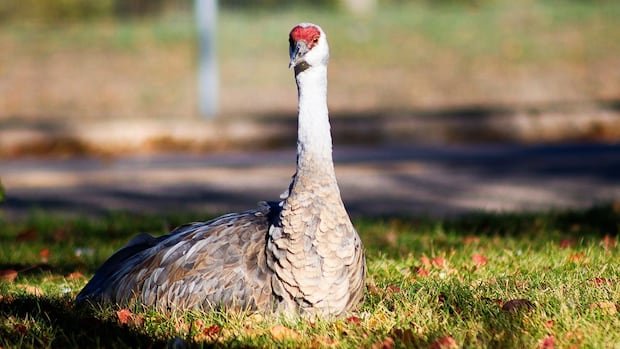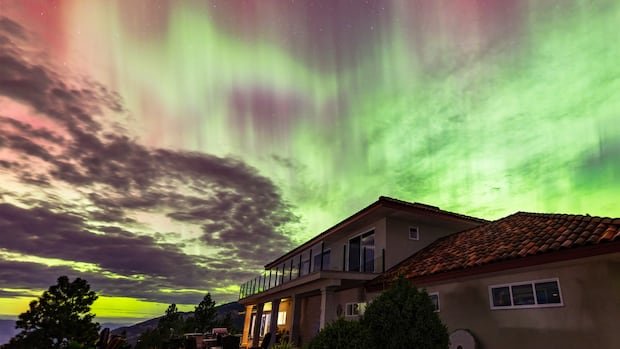Regina’s Wascana Park is usually filled with geese, so a lone sandhill crane that has been spotted in the area is causing a bit of a stir.
Bird fans like Dacie Matchett-Orb and her 11-year-old son Chevy have flocked to the park in search of the crane.
Early last week, they decided to try their luck near the Saskatchewan Science Centre, a place where people had reported seeing the sandhill crane, but they arrived and didn’t find it.
Later that day, Matchett-Orb checked the area near the Conexus Arts Center and saw the tall red-crowned bird, then returned to her son after school.
“I was excited because I saw it that morning, but my son was super, super excited,” Matchett-Orb said.
She said her son has always had an obsession with birds, a love he shares with his grandmother, and has been taking pictures of them since he was six years old. They carried a zoom lens so they could keep their distance.
“He got some really good shots of [the crane] going to bed and said, ‘We need to print these for my grandmother.'”
Saskatchewan Wildlife Rescue Society executive director Bonnie Dell said she believes the bird is injured because it does not appear capable of flying long distances and sandhill cranes are not typically found in urban environments.
“Our most important message is: leave this poor bird alone,” Dell said.
Video captured Wednesday afternoon by CBC Saskatchewan videographer Will Draper shows the sandhill crane that has been spotted around Regina.
There have been several instances over the past few months where people have crowded around the crane, Dell said, adding that there have even been times when dogs have chased it.
“[The birds] “They’re trying to stock up on calories to stay warm and make this bird unnecessarily stressed, burning that extra energy that it needs right now just to survive,” he said.
Dell is asking people to stop searching for the bird and refrain from posting its location on social media.
The Saskatchewan Wildlife Rescue Society is working alongside Salt Haven to capture the sandhill crane and place it in care. Dell said eight “dedicated” volunteers are monitoring the bird until then.
He said if the injury is old or cannot be repaired, they will come up with a plan, which could result in euthanasia due to provincial laws preventing ownership of non-releasable wildlife.
“If this bird can’t be returned to the wild, if we could capture it safely, then that would be the kindest thing for this bird,” Dell said.









